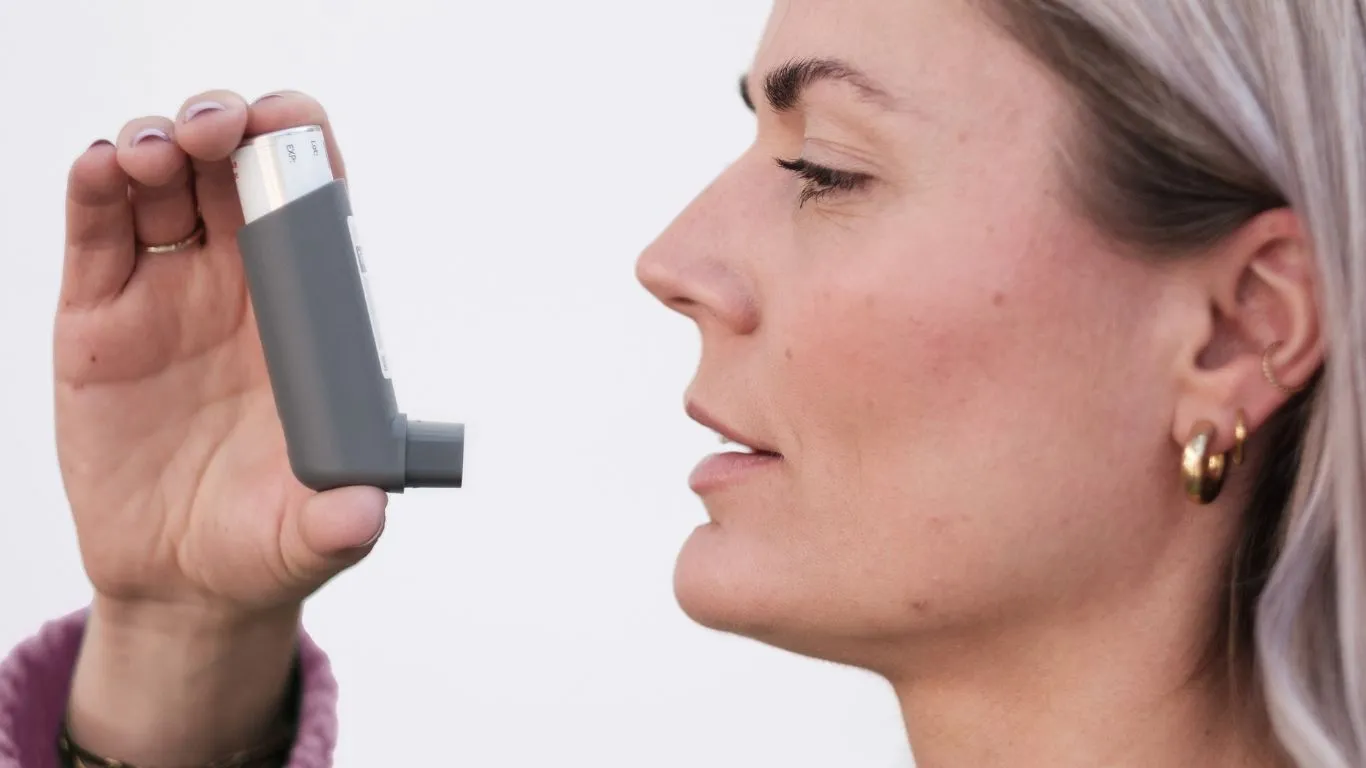Can Asthma Cause Difficulty Catching Breath After Talking? Essential Solutions
Can asthma cause difficulty catching breath after talking? Absolutely, and I’ve seen this first-hand more times than I can count working as a Pulmonary Nurse. If you’ve ever found yourself short of breath after a simple conversation or a short speech, and you live with asthma, you’re definitely not alone. It’s a concern that comes up with many of my patients, and it can be surprisingly frustrating — especially when you’re not even exerting yourself physically. Let’s talk about why this happens, what’s going on inside your body, and how you can start managing it better.
Understanding the Breathing Struggle Behind the Words

Talking may not seem like a strenuous activity, but for someone with asthma, it can feel like climbing stairs with a cinder block on your chest. It’s not just the lungs; it’s the whole body reacting. Breathing and talking actually require a well-coordinated dance between your respiratory and vocal systems. For folks with asthma, that dance is more like a chaotic tug-of-war.
Here’s something I often explain to my patients: when you speak, you’re using air from your lungs to push out sound. So if your airways are already inflamed or restricted — a classic asthma trait — that effort becomes a big ask. Add a little anxiety or a dry environment into the mix? Boom, shortness of breath.
What’s Actually Happening When You Can’t Catch Your Breath After Talking?
To break it down, here’s what might be going on internally:
- Inflamed airways: Asthma causes chronic inflammation, which makes your airways extra sensitive and prone to tightening up.
- Reduced airflow: Even before you feel a full-blown asthma attack, air may not move through your bronchial tubes as freely as it should.
- Excess mucus: This can build up in your airways, making it harder to push out air when you’re speaking.
- Increased respiratory effort: When you’re talking a lot, you’re exhaling more than you’re inhaling — that imbalance can tip you into breathlessness.
I remember a patient — let’s call her Jenny — who would go completely breathless after giving short team updates at work. She thought she was just nervous. Turned out, it was a mild but persistent asthma flare-up causing her airways to constrict slightly every time she spoke longer than a few minutes. Once we adjusted her medication and added pre-speaking breathing techniques, she got her confidence — and her breath — back.
Can Asthma Cause Difficulty Catching Breath After Talking? Here’s Why It’s Often Missed

One of the biggest issues I’ve noticed in clinical practice is how often this specific symptom gets overlooked. People expect asthma to show up during a jog or while chasing after their toddler — not when they’re just chatting with coworkers or ordering coffee. But it makes sense when you think about how the mechanics of speech work.
Speech forces controlled exhalation. And if you’re not breathing efficiently to begin with, that control gets dicey. Add an asthma trigger like cold air, allergens, or stress, and suddenly your body is fighting for every breath mid-conversation.
Here’s what I usually ask my patients when they tell me they’re feeling winded after speaking:
- Does it happen only when you’re talking, or also when you’re quiet?
- Are you using your rescue inhaler more than usual?
- Do you have allergies, sinus issues, or post-nasal drip that might be contributing?
- What’s your environment like — dry, dusty, or heavily air-conditioned?
More often than not, we uncover subtle asthma symptoms that hadn’t been noticed before. And that’s a game-changer. Asthma isn’t always dramatic wheezing and coughing. Sometimes it’s just feeling like you ran a marathon after telling a story at dinner.
How I Help Patients Who Struggle With Talking-Induced Breathlessness
Let’s be real — nobody wants to feel like they can’t hold a conversation. It can be embarrassing and isolating. My approach is always rooted in education, prevention, and empowerment. That’s where the E-E-A-T principles come in — experience, expertise, authoritativeness, and trustworthiness. My job isn’t just giving people a diagnosis. It’s helping them actually live better with it.
In the clinic, here’s what works best:
- Proper inhaler technique: You’d be surprised how many people use theirs incorrectly — a small fix with big results.
- Preemptive use: For some, taking a bronchodilator before a speech or long meeting can ease symptoms dramatically.
- Breathing exercises: Techniques like pursed-lip breathing and diaphragmatic breathing help slow things down and regain control.
- Voice pacing: I coach patients on slowing down speech, pausing more, and letting breath be part of their rhythm.
I even teach a little trick I call “speak-breathe-switch” — say a sentence, breathe in, then speak again. It takes practice, but wow, it helps!
Why This Symptom Deserves More Attention

Shortness of breath after talking isn’t just an annoyance — it can be a signal that your asthma isn’t fully controlled. And trust me, ignoring it won’t make it go away. In fact, if left unmanaged, it could mean more frequent exacerbations, reduced lung function over time, and a whole lot of discomfort you don’t need to live with.
If you’re nodding along while reading this and thinking, “Yep, that’s me,” then the next step is getting a proper assessment and talking through a tailored asthma action plan. That’s where things start to shift — when you stop brushing it off and start understanding what your body’s trying to tell you.
Managing the Breathlessness: It’s More Than Just Taking a Puff

Okay, so we’ve established that yes — asthma can cause difficulty catching breath after talking. But the next natural question I get from patients is: “So what do I do about it?” It’s not always about just upping your meds or relying on a quick puff of your inhaler (though sometimes, that *is* the answer). It’s about looking at the full picture.
In my time working with patients day in and day out, I’ve seen real change happen when people start seeing asthma as more than an on/off switch. It’s not just “asthma attack or no asthma attack.” There’s a whole range of subtle symptoms — and talking-induced breathlessness is one of those sneakier ones. So here’s where the real work begins.
1. First, Get That Assessment — Don’t Just Guess
One of the biggest game changers I’ve seen? A proper spirometry test. It’s simple, quick, and gives you real data about how your lungs are functioning. You’d be surprised how many patients have moderate obstruction and don’t even know it because they’re used to “feeling a little out of breath.” I’ve had folks come in saying they thought they were just “bad at cardio,” but their lung capacity told another story.
So step one is always a professional assessment — ideally with a pulmonologist or respiratory specialist. Bring up the talking-induced breathlessness specifically. That helps tailor the treatment plan to your actual triggers, not just the textbook version of asthma.
2. Medication Tweaks That Actually Work
As a nurse, I’ve sat in on plenty of med adjustments with our asthma patients. Here’s what often comes into play:
- Adding a long-acting bronchodilator: If your breathlessness is creeping up more often — especially during mild activities like talking — your provider may suggest this alongside your corticosteroid inhaler.
- Pre-event medication use: I’ve coached patients to use their rescue inhaler 15 minutes before big meetings or presentations. It’s a proactive move that really helps.
- Allergy control: Since asthma and allergies often go hand-in-hand, antihistamines or nasal sprays can cut down post-nasal drip, which plays a surprising role in speaking-related breathing trouble.
It’s not one-size-fits-all. I always remind folks: the best asthma plan is the one that’s tailored to your life.
How Your Lifestyle Might Be Making Breathlessness Worse

Sometimes, the culprit isn’t just inside your body — it’s around you. I’ve had more than a few patients make simple tweaks at home or work and suddenly feel a lot more in control. Here are some lifestyle factors that might be turning your asthma into a chatterbox problem:
Dry Air = Dry Airways
This is a huge one. Especially in winter or in over-air-conditioned offices. Dry air dries out your vocal cords and narrows your airway a little more — not ideal when you’re already struggling. A small bedside humidifier changed the game for one of my regulars who always felt breathless during morning conference calls.
Stress + Talking = Over-breathing
We don’t talk enough about the anxiety-asthma connection. If you’re nervous, you tend to talk faster, take shallow breaths, and forget to pause. That creates a snowball effect. I’ve helped patients build calming rituals before meetings — deep breathing, gentle stretches, or even just a few quiet moments to ground themselves. Doesn’t sound medical, but wow, it works.
Hidden Triggers Lurking in Everyday Places
Things like scented candles, dust, pet dander, and mold might not set off a full asthma attack, but they can make your airways more reactive when you speak. It’s like stacking weights on your lungs — even if you’re not aware of it at first.
I always ask patients to do a “trigger scan” of their spaces. One guy I worked with had a plug-in air freshener right next to his desk. Once he removed it, he stopped needing his inhaler before phone calls.
Tips I Swear By (And Teach Almost Every Patient)

Over the years, I’ve built up a list of small but powerful hacks for patients dealing with asthma-related difficulty catching breath after talking. These aren’t one-size-fits-all, but here’s what’s worked really well for many of my folks:
- Use voice pauses: You don’t need to rush through every sentence. Build in pauses. Not only does it help your breathing — it actually makes you sound more confident.
- Hydrate before you speak: Dry throat = more effort to speak = more breath lost. Sipping warm water before long conversations can make a noticeable difference.
- Pursed-lip breathing: Inhale through your nose, exhale slowly through pursed lips like you’re blowing out a candle. It slows breathing, increases oxygen intake, and helps calm that panicky “I can’t breathe” feeling.
- Elevate your position: If you start to feel winded while talking, try standing up or sitting more upright. Posture can open up your chest and ease airflow instantly.
Sometimes the solution isn’t one big change — it’s a handful of small ones that together shift everything. My job is to help patients experiment until they find what works. It’s empowering, honestly — watching someone go from breathless and embarrassed to clear, calm, and confident.
Let’s Normalize Talking About It (Pun Intended)

This might sound odd coming from a nurse, but here goes: asthma shouldn’t be a silent struggle. Especially when it shows up in weird ways — like making it hard to speak. I’ve met so many people who were dealing with it quietly, brushing it off, or thinking they were “just out of shape.” The truth is, asthma looks different for everyone. And when you start noticing symptoms while talking, your body is trying to tell you something important.
And hey — if you’ve been dealing with this for a while, feeling frustrated or even embarrassed, I see you. I’ve walked with hundreds of patients through the same journey. You’re not being dramatic. You’re not imagining it. You’re just someone whose lungs need a little more love and attention. And there are real, practical things you can do starting right now.
When Talking Feels Like a Workout: You’re Not Alone

I can’t even count how many times a patient has leaned in quietly and said, “Is it weird that I get out of breath just talking?” And every time, I give the same answer — you’re not alone, and it’s not weird. It’s just one of those lesser-known ways asthma shows up. Not dramatic. Not textbook. But still disruptive.
What I’ve come to realize over the years is that we need to start looking at asthma symptoms beyond the obvious wheezing and coughing. That slight breathlessness after speaking isn’t “just nerves” or “being out of shape.” It’s your lungs trying to keep up in a world that rarely pauses for breath.
Speech, Breath & The Body’s Balancing Act
When we speak, we naturally adjust our breathing — shorter inhales, longer exhales, changes in rhythm. For someone with asthma, that shift can unmask inflammation or airflow limitations that aren’t obvious when you’re just sitting quietly. It’s kind of like your lungs revealing their hidden stress test — and sometimes, they don’t pass with flying colors.
I’ve seen folks who run marathons without a hitch but struggle during a 10-minute presentation at work. Why? Because asthma doesn’t always act the way you expect it to. Add stress, dry air, allergens, or even poor posture into the mix, and boom — you’re suddenly winded mid-sentence, clutching for air between thoughts.
What You Can Do Today: Small Wins, Big Impact

So let’s talk real-life strategies. You don’t need to overhaul your life overnight. Sometimes the most effective changes are the smallest. Here are a few that have helped my patients — and honestly, even me when I had a bout of reactive airway issues post-COVID:
- Practice “rescue breathing”: This isn’t a formal term, just something I call the technique I teach patients — a combo of diaphragmatic and pursed-lip breathing that helps reset your rhythm. Try it for 30 seconds before a call or after a long chat session. It’s incredibly grounding.
- Record yourself talking: I know, cringe. But hear me out. When you hear your own voice, you’ll notice patterns — talking too fast, not pausing enough, breathiness. Once you know your speech rhythm, you can start modifying it with intention.
- Schedule “voice breaks”: If your job is voice-heavy (teachers, therapists, sales reps — I’m looking at you), build in silent moments. Even just 5 minutes per hour of quiet time can help your lungs recalibrate.
And if none of those seem to help? That’s your signal to speak with your healthcare provider. Sometimes, talking-induced breathlessness is the tip of the iceberg, and you need a medication reassessment or further testing like a methacholine challenge to get clarity.
Therapies That Go Beyond Inhalers

Yes, inhalers are life-saving. But they’re just one piece of the puzzle. I’ve worked with so many patients who got the best results from a combo of medical and non-medical strategies.
Breathing Retraining with a Respiratory Therapist
Think of this like physical therapy, but for your lungs. I’ve referred folks to specialists who teach techniques that literally reprogram how you breathe under stress — slow, controlled, efficient breathing that reduces flare-ups. NIH even has resources on this if you want to learn more.
Speech Therapy — Not Just for Pronunciation
Yep, speech therapists can actually help with breath control during talking. It’s especially useful if your asthma is aggravated by voice strain. One patient of mine was a choir director — with asthma. Through therapy, she learned to manage airflow while speaking and singing. Total game-changer.
Mind-Body Therapies
Yoga, guided meditation, and even singing therapy (yep, that’s a thing) help retrain your breath and reduce overall tension in the body. Asthma is as much a nervous system issue as it is a respiratory one sometimes. Health.com has some solid articles on these complementary therapies if you’re curious.
Asthma in the Real World: Some Truths I’ve Learned

Look, I get it — talking about asthma (pun intended) isn’t always easy. There’s still stigma. People don’t want to seem “weak” or “high maintenance.” But here’s what I’ve seen over and over again:
- More people are dealing with this than you think — they’re just quiet about it.
- Once you get the right tools and treatment plan, life becomes way less exhausting.
- And yes, asthma absolutely can cause difficulty catching breath after talking — and it’s 100% valid to seek support for it.
I’ve walked beside patients through diagnosis, denial, discovery, and finally, confidence. I’ve had teary conversations in hospital rooms and high-fives in follow-up visits when someone finally nailed that Zoom presentation without wheezing. The transformation is real — and it’s possible for you too.
Disclaimer
This article is for educational purposes only and does not replace medical advice from a licensed professional. Always consult with your healthcare provider for personalized care, especially if you’re experiencing new or worsening symptoms.
References

Bianca Nala is a compassionate Nurse Practitioner with a strong background in primary and respiratory care. As a health writer for Healthusias.com, she combines her clinical expertise with a talent for clear, relatable storytelling to help readers better understand their health. Bianca focuses on topics like asthma, COPD, chronic cough, and overall lung health, aiming to simplify complex medical topics without losing accuracy. Whether she’s treating patients or writing articles, Bianca is driven by a single goal: making quality healthcare knowledge accessible to everyone.






